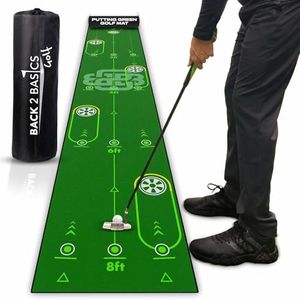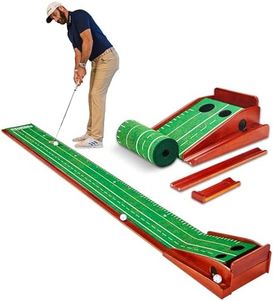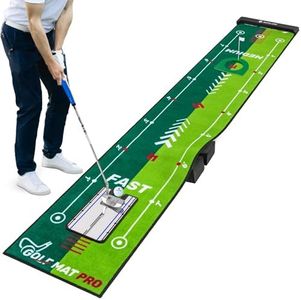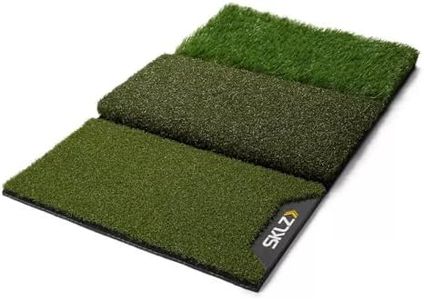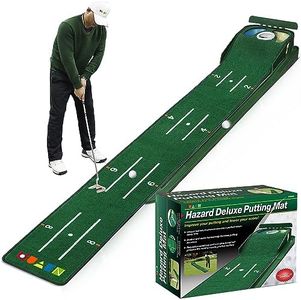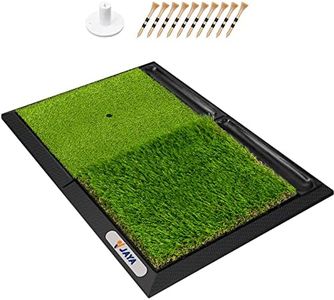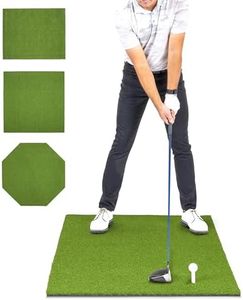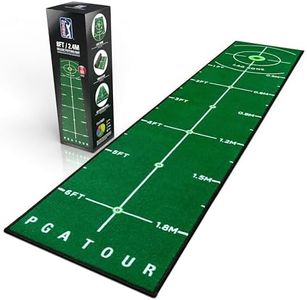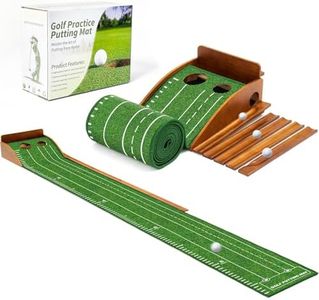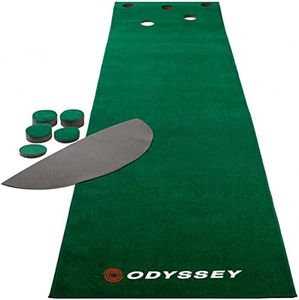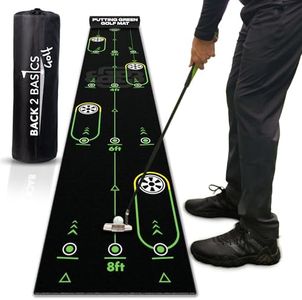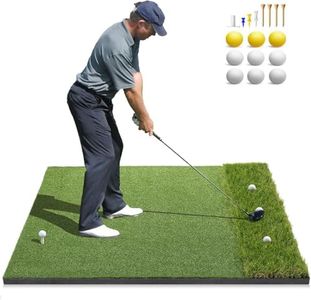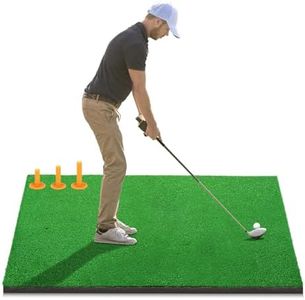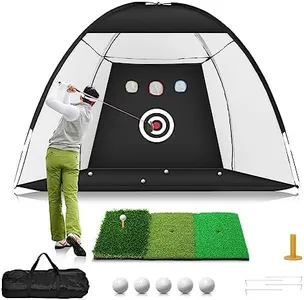We Use CookiesWe use cookies to enhance the security, performance,
functionality and for analytical and promotional activities. By continuing to browse this site you
are agreeing to our privacy policy
10 Best Golf Practice Mats
From leading brands and best sellers available on the web.Buying Guide for the Best Golf Practice Mats
Selecting the right golf practice mat is essential if you want to make the most out of your practice sessions at home or in your yard. A good mat can help you simulate real turf conditions, making your swings more effective and reducing strain on your body. By understanding the key specifications of practice mats, you will be able to find the one that best matches your practice style, available space, and goals.Mat SizeMat size refers to the physical dimensions of the practice mat. The importance of size lies in how much swing space you have and the type of shots you want to practice. Smaller mats (typically around 1-2 feet wide) are more portable and great for practicing short shots or putting, whereas larger mats (3 feet wide and above) allow full swings and give you room to stand with the ball. To choose the right size for you, think about where you plan to use the mat and what kinds of strokes you hope to work on; a golfer with ample space and desire to practice full swings will need a bigger mat than someone focused only on chipping or putting.
Turf ThicknessTurf thickness indicates how deep the artificial grass layer is. This matters because thicker turf can better simulate the feel of a real fairway and is easier on your joints, as it absorbs more shock when you hit down on the mat. Thinner turf (under half an inch) is less forgiving and best for occasional chip shots, while mid-range thickness (about half an inch to an inch) is versatile for most basic practice. Thicker mats (over an inch) are recommended if you want realistic feedback or have sensitive wrists and elbows. Your choice should depend on how realistic you want your practice to feel and whether joint comfort is a priority.
Backing MaterialThe backing is the layer beneath the artificial grass that provides stability and cushioning. This part is important to reduce movement of the mat and to protect the surface beneath it (like your floor or lawn). Basic mats may have a single, thin rubber layer, which is lightweight but may slip. Heavier-duty mats use thick rubber or foam backings, making them more comfortable and stable, especially if you take powerful swings. If you plan to use your mat indoors or on hard surfaces, a substantial backing will help prevent slipping; for casual or lighter use, a basic backing might be sufficient.
Tee CompatibilityTee compatibility refers to whether the mat allows you to use real golf tees or has built-in rubber tees. Mats with holes for real tees provide maximum realism and let you adjust tee height as you would on a course, which is ideal for serious practice with drivers and woods. Some mats only have fixed rubber tees, which are less flexible. If you plan on practicing tee shots or want to mimic course conditions, look for a mat that lets you insert your own tees; for putting or chipping, this feature is less relevant.
DurabilityDurability is about how well the mat stands up to repeated use over time. It is influenced by material quality, thickness, and overall construction. Durable mats made from high-density fiber and sturdy backing resist wear, flattening, and tearing, which is especially important if you use real golf clubs and practice regularly. If you just plan on light or infrequent use, a basic mat may suffice, but frequent or heavy hitters should look for strong, long-lasting materials to ensure good value and reliable performance.
PortabilityPortability refers to how easy it is to move, carry, or store the mat. Some mats are light and can be rolled up easily, which is great if you need to set up and take down your practice space often or travel with your mat. Heavier, larger mats offer more stability but are less convenient to move. Think about how permanent your practice setup will be—if it’s in a dedicated space, weight and bulk may not matter, but if you need to put your mat away after each use, portability will be important.
